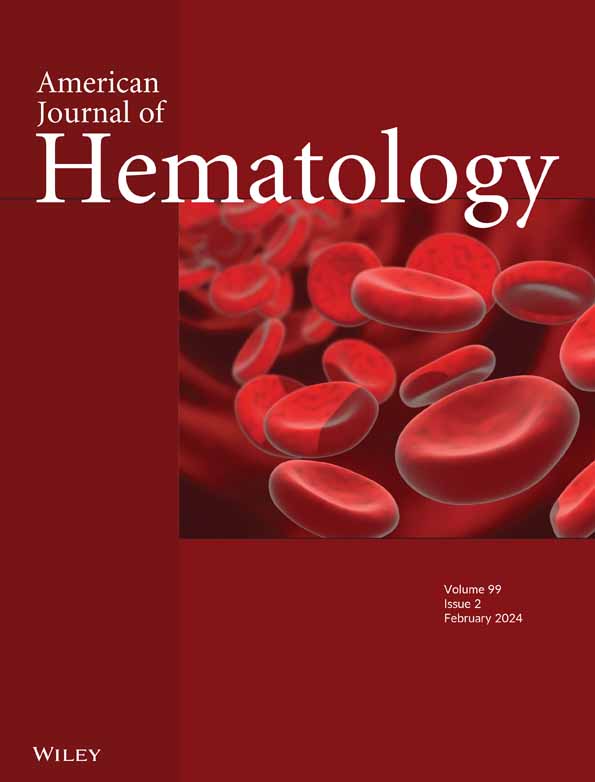健康和疾病中的组织常驻髓细胞和组织细胞:新出现的概念。
IF 9.9
1区 医学
Q1 HEMATOLOGY
引用次数: 0
摘要
尽管所有的骨髓细胞都被认为来源于造血干细胞,但每个骨髓谱系中的细胞都是异质的,它们的分布和功能也各不相同,这取决于潜在的生理和病理过程、年龄、性别、遗传和表观遗传特征。一般来说,骨髓细胞可分为循环细胞和组织常驻细胞。组织常驻骨髓细胞可进一步分为源自循环单核细胞、循环干细胞或局部组织限制性干细胞或祖细胞的细胞。根据潜在疾病和合并症,这些细胞的表型、功能和分布可能发生重大变化。在本文中,我们讨论了该领域的新进展和相关的新兴概念,围绕组织驻留骨髓细胞及其在反应性和克隆性疾病中的作用和功能。在这篇文章中深入回顾的细胞类型包括单核细胞、巨噬细胞、组织细胞、树突状细胞和组织肥大细胞,重点是炎症疾病过程、血管病变、实体瘤和造血恶性肿瘤。此外,本文还提供了与患者相关和疾病相关的诊断和预后变量、多参数预后评分系统以及这些肿瘤的治疗选择和算法的最新进展。最后,我们的文章概述了精准医学方法、转化研究和人工智能在单核细胞、组织细胞和肥大细胞疾病的诊断、预测和管理中的新兴作用和影响。本文章由计算机程序翻译,如有差异,请以英文原文为准。
Tissue-Resident Myeloid and Histiocytic Cells in Health and Disease: Novel Emerging Concepts.
Although all myeloid cells are considered to derive from hematopoietic stem cells, the cells in each myeloid lineage are heterogeneous populations, and their distribution and functions vary, depending on underlying physiologic and pathologic processes, age, sex, and genetic and epigenetic signatures. In general, myeloid cells can be separated into circulating and tissue-resident cells. Tissue-resident myeloid cells can further be divided into cells derived from circulating monocytes, circulating stem cells, or local tissue-restricted stem or progenitor cells. Depending on underlying diseases and co-morbidities, the phenotype, function, and distribution of these cells may change substantially. In this article, we discuss new developments in the field and related emerging concepts around tissue-resident myeloid cells and their role and function in reactive and clonal disorders. Cell types reviewed in depth in this article include monocytes, macrophages, histiocytes, dendritic cells, and tissue mast cells, with a focus on inflammatory disease processes, vascular pathologies, solid tumors, and hematopoietic malignancies. Moreover, the current article provides an update on patient-related and disease-related diagnostic and prognostic variables, multi-parametric prognostic scoring systems, and therapeutic options and algorithms in these neoplasms. Finally, our article provides an overview on the emerging role and impact of precision medicine approaches, translational research, and artificial intelligence in the diagnosis, prognostication, and management of monocytic, histiocytic, and mast cell disorders.
求助全文
通过发布文献求助,成功后即可免费获取论文全文。
去求助
来源期刊
CiteScore
15.70
自引率
3.90%
发文量
363
审稿时长
3-6 weeks
期刊介绍:
The American Journal of Hematology offers extensive coverage of experimental and clinical aspects of blood diseases in humans and animal models. The journal publishes original contributions in both non-malignant and malignant hematological diseases, encompassing clinical and basic studies in areas such as hemostasis, thrombosis, immunology, blood banking, and stem cell biology. Clinical translational reports highlighting innovative therapeutic approaches for the diagnosis and treatment of hematological diseases are actively encouraged.The American Journal of Hematology features regular original laboratory and clinical research articles, brief research reports, critical reviews, images in hematology, as well as letters and correspondence.

 求助内容:
求助内容: 应助结果提醒方式:
应助结果提醒方式:


